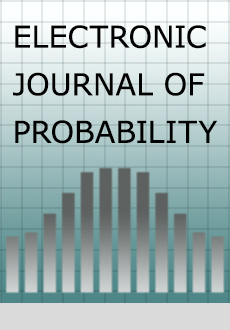Abstract
In this paper we consider a random graph on which topological restrictions are imposed, such as constraints on the total number of edges, wedges, and triangles. We work in the dense regime, in which the number of edges per vertex scales proportionally to the number of vertices $n$. Our goal is to compare the micro-canonical ensemble (in which the constraints are satisfied for every realisation of the graph) with the canonical ensemble (in which the constraints are satisfied on average), both subject to maximal entropy. We compute the relative entropy of the two ensembles in the limit as $n$ grows large, where two ensembles are said to be equivalent in the dense regime if this relative entropy divided by $n^2$ tends to zero. Our main result, whose proof relies on large deviation theory for graphons, is that breaking of ensemble equivalence occurs when the constraints are frustrated. Examples are provided for three different choices of constraints.
Citation
F. den Hollander. M. Mandjes. A. Roccaverde. N.J. Starreveld. "Ensemble equivalence for dense graphs." Electron. J. Probab. 23 1 - 26, 2018. https://doi.org/10.1214/18-EJP135
Information





